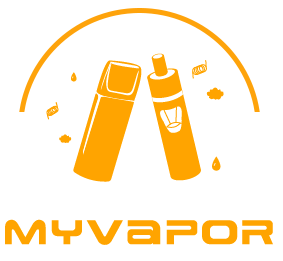Why does my e-cigarette crackle?
This is a normal phenomenon resulting from a temperature rise in the resistance coil. Under the effect of heat, the e-liquid contained in the wick reaches its boiling point, which causes characteristic crackling…….
RLX Obtains Chinese Manufacturing License
China’s State Tobacco Monopoly Administration (STMA) has licensed RLX Technology to operate in the vapor business……
Malaysian Govt. Urged to Differentiate Between Tobacco And Vape Policies
Four vape groups, represented by the Malaysia Retail Electronic Cigarette Association president Datuk Adzwan Ab Manas are to……
Mistaken belief about e-cig keeps people smoking, which is more harmful
July 21, 2022
The number of US adults who think e-cigarettes are more harmful than traditional tobacco products has effectively doubled year on year from 2018 to 2020, according to new research – and that has affected smoking rates, which actually is more harmful.
The study, led by researchers from the American Cancer Society (ACS), found 28.3% of the roughly 3,300 Americans surveyed in 2020 believed vaping was more harmful than smoking – up from 12.8% in 2019 and 6.8% in 2018 – possibly influenced by scares over Evali and Covid.
Those who perceived e-cigarettes as less harmful than smoking dropped from 17.6% in 2018 to 11.4% in 2020, while the belief that they were equally harmful remained relatively steady at 35.6% in 2020 compared to 37.4% in 2018.
The researchers said the trend was worrying because harm perception could be guiding tobacco product use, as changes in use primarily occurred among people who believed their preferred product was less harmful, and the widespread belief that vaping was as bad as smoking was leading to an overall increase in use of combustible tobacco products.
Comparing survey responses on harm perception to responses about use, they found that among those who believed e-cigarettes to be less harmful, exclusive e-cigarette use increased and exclusive smoking declined linearly between 2018 and 2020. Among those who said the two were equally harmful, dual use increased linearly between 2018 and 2020 while among those that said e-cigarettes were more harmful, exclusive smoking almost doubled from 8.4% in 2019 to 16.3% in 2020 after declining between 2018 (18.5%) and 2019 (8.4%).
The damaging effects of public perception
This suggests that changes in use of specific tobacco products was guided by relative harm perception. Other research has shown the critical role of harm perception in individual tobacco decisions, but this study suggests that the relationship also translates to tobacco use prevalence changes at the population level, the researchers added.
“While this study showed sharp changes in public perceptions of e-cigarette versus cigarette harms during Evali and Covid-19, the more relevant finding for public health is that increases in cigarette smoking and e-cigarette use prevalence occurred primarily in individuals who perceived their preferred product as relatively less harmful,” said lead author Priti Bandi. “This suggests that public perceptions of e-cigarettes versus cigarettes harm influences population tobacco use patterns.”
Researchers analysed data from the National Cancer Institute-sponsored Health Information National Trends Survey, which collected nationally representative data from more than 10,000 US adults from 2018 to 2020, surveying 3,360 people in 2018, 3,217 in 2019 and 3,677 in 2020.
These results coincided with both the Evali crisis and the Covid-19 pandemic and it could be that both had an impact on harm perception. Results were consistent with other studies that reported that perception of e-cigarette harms became less accurate after the Evali outbreak, the researchers said.
Bad news has bad influence
The trend could be linked to widespread news coverage of Evali focusing on safety of vaping and absolute e-cigarette risks. The fact that exaggerated perceptions of the danger of vaping danger persisted in March and April 2020 after the link to vitamin E acetate as an additive to THC vaping products was identified in September could be due to media coverage not being sustained at initial levels after the outbreak source was identified, they added.
Similarly, an increase in the responses “don’t know” and “as harmful” coincided with the Covid pandemic, which could be linked to conflicting and sometimes inaccurate information being circulated about Covid risks from smoking and nicotine use.
“Relative harm perceptions themselves are potentially influenced by events that change health information/communications about cigarette and e-cigarette disease risks, including health campaigns, tobacco marketplace changes, or health events that change absolute or relative health risks associated with product use,” the researchers said. “The US witnessed two major health events since 2018 where new health risks associated with cigarette smoking and e-cigarette use emerged.”
Bandi called for interventions to encourage people to be informed of available scientific findings, and for future health campaigns to accurately communicate scientific findings – such as that smoking is more harmful than vaping.
“While no tobacco products are safe, there are inherent differences between relative and absolute harms between tobacco products that can influence behaviour. In turn, public health education campaigns must facilitate informed decision making by translating emerging scientific evidence accurately to appropriate audiences,” she added.

